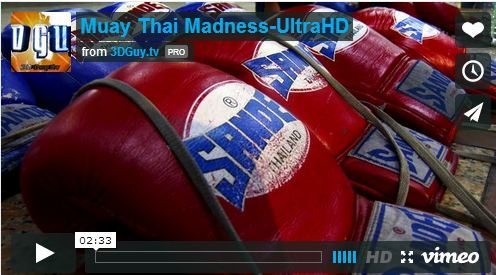As a part of the hands-on review for the Sony PXW–Z100 this video shows the range and capabilities of this fantastic new camera. Please go to Vimeo to watch it in 4K UltraHD, or better still if you have a 4K TV then download it from Vimeo and watch it on your 4K TV. The shoot at 5am in order to get that golden morning sun. But we also want to test how the newest Sony UltraHD camera would handle the blazing sun. The results were pure magic. It worked beautifully with our Edelkrone SliderPlus V2. A Manfrotto MVH502AH head held the camera easily and the slides were like butter. Maybe I’ve been watching too many J.J.Abrams films, but I have to say, the lens flares were really sweet. The dynamic range is rated at 10 stops, but it looks like more. Using two 64GB QXD S series memory cards gave us a total of 26 minutes of recording time shooting at 3849×2160 59.94p.

For this shoot I choose Cinematone 1 for a softer black as I wasn’t sure just how dark the Cinematone 2 setting would take me. Although it does paint functions, the camera does not give you HyperGamma settings. I hope that may come in a future firmware upgrade. I did set the limit for gain at 9db in auto mode. The standard 15db had a little too much noise for my taste. We used a combination of manual and auto settings and it is my opinion that in a “run n’ gun” situation, the auto settings perform admirably. I stayed pretty safe on most of my other settings as I wanted a good shoot as much as I wanted to test the camera. As I stated in the first part of this review, the Sony PSW-Z100 is laid out like an old friend. The controls will be familiar to any shooter who has used most Sony cameras and that is a plus. There can be nothing more frustrating than missing a shot because you weren’t sure where the control is located. One more accessory that I added to the mix was my Atomos Samurai Blade. While the screen on the Sony is a 9″ diagonal, 1280×720, the same as the Blade, the Sony’s 8″ screen size is smaller.
Don’t get me wrong, the Sony screen is crystal clear. It is just that the Samurai Blade is bigger with it’s 11 1/2″ diagonal screen and with the SuperAtom IPS Touchscreen with it’s 325ppi (pixels per inch), 179 degree angle of view and 400 nits of brightness, is a far superior instrument for monitoring the shot. Another excellent feature for the Sony PXW-Z100 is the addition of a hot shoe at the rear of the handle, as well as the one in the front. This rear position makes it possible to maintain good balance when using the Atomos Samurai Blade in that hot shoe. One feature that was sorely missing on the Sony was the absence of a waveform/Vectorscope display. I was really quite surprised that such an invaluable pro tool was left off. This is actually a great boon to the Atomos people. The Samurai Blade not only features a waveform/Vectorscope but also includes RGB Parade. Matching Sony, the Blade offers focus assist tools, peaking and zebra. In addition the Samurai Blade gives you false color, b&w and blue only exposure. Truthfully, the addition of the Atomos recorder with the Sony PXW-Z100 gives you a fantastic package for shooting 4K UltraHD and 1920×1080 HD simultaneously. The tests continue with a wide variety of subjects and shooting conditions. Please keep watching for the next installment.




Do you have any picture profiles for this camera? Or ways to keep the noise down? I find that is camera has terrible noise issues and maybe with the right profile it could be a little better.
The only noise issues that I have experienced has come from having the gain boosted. Like all digital cameras, light is crucial. While it will shoot in low light anything above 9db gives, what I consider, unacceptable noise.
Profiles need to be adjusted based on lighting conditions. In low light situations, get away from Cinetone and go to more standard digital profiles. Be sure to adjust gamma accordingly.
I hope this helps.